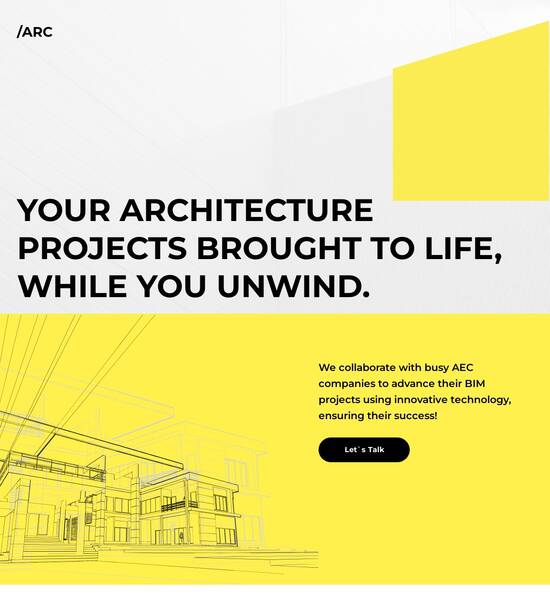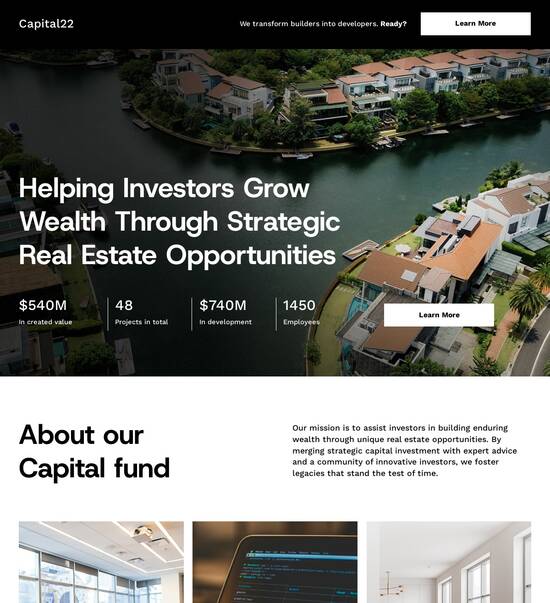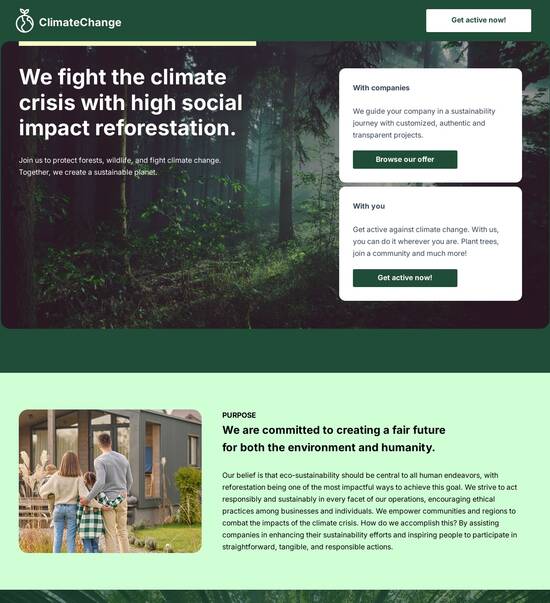
Event registration page template for ASP.NET developers
Explore Similar TemplatesAbout template
Master your online marketing with this builder for event registration page template for ASP.NET developers. Try more tools to create an immaculate landing page.
Recommended templates

Easy to build without coding
With the intuitive drag-and-drop builder, anyone on your team can create high-converting pages without any knowledge of code or design. Make enhancements to your landing page with custom widgets using Javascript, HTML/CSS, or third-party scripts.

Multiple layouts for any industry and goal
Select from 500+ landing page layouts built to boost conversions across industry-specific scenarios. Customize them by adjusting fonts, adding images, and generating on-brand content with the AI assistant. Quickly scale with Instablocks® and Global Blocks that you can save, reuse, and update globally.

Loads fast and looks polished on any device
Every template is responsive, which means they present professionally on any device and load blazingly fast with our Thor Render Engine. You can also power them up with Google AMP technology to deliver an unparalleled mobile experience and drive higher conversions.

Robust analytics & experimentation
Get real-time updates and reporting across all your devices, showing the number of visitors, conversions, cost-per-visitor, and cost-per-lead. Launch AI-powered experiments, run A/B tests, and use heatmaps to analyze user behavior, then optimize your landing page to maximize conversions.







Easy to build without coding
With the intuitive drag-and-drop builder, anyone on your team can create high-converting pages without any knowledge of code or design. Make enhancements to your landing page with custom widgets using Javascript, HTML/CSS, or third-party scripts.
Multiple layouts for any industry and goal
Select from 500+ landing page layouts built to boost conversions across industry-specific scenarios. Customize them by adjusting fonts, adding images, and generating on-brand content with the AI assistant. Quickly scale with Instablocks® and Global Blocks that you can save, reuse, and update globally.
Loads fast and looks polished on any device
Every template is responsive, which means they present professionally on any device and load blazingly fast with our Thor Render Engine.
Robust analytics & experimentation
Get real-time updates and reporting across all your devices, showing the number of visitors, conversions, cost-per-visitor, and cost-per-lead. Launch AI-powered experiments, run A/B tests, and use heatmaps to analyze user behavior, then optimize your landing page to maximize conversions.
All the features you need to build speed dating registration form template
Explore more featuresLearn how to build event registration form template excel
Frequently asked questions about registration form template html
Leading the way in building high-performing landing pages





Event registration website template free: Your ultimate how-to guide
Instapage sets itself apart as the most powerful landing page and conversion rate optimization (CRO) platform available. Marketers in various sectors such as business services, tech, education, and financial services can benefit from streamlined processes to enhance their digital marketing campaigns. The platform eases the burden of creating high-converting landing pages, allowing for rapid deployment and optimization without needing extensive coding skills.
Why choose Instapage for landing page creation?
Choosing Instapage means accessing over 100 ready-to-use templates and pre-built lead generation elements. Whether you’re in marketing and advertising or working for a government agency, these tools help you quickly launch pages that capture leads effectively. No coding is necessary, making it perfect for teams of all sizes and budgets.
- Accessible templates: Easily customize high-converting templates suited for different verticals.
- Speed: Rapidly deploy landing pages without waiting on developers or complex iterations.
- Optimization tools: Utilize built-in features to continually improve the effectiveness of your campaigns.
Steps to create your first landing page
To effectively create a landing page on Instapage, follow these outlined steps:
- Select a template: Choose from a library of customizable templates that fit your campaign objectives.
- Utilize the builder: Drag and drop elements to design your page, integrating personalized content based on audience segments.
- Set optimization goals: Define what success looks like – such as higher conversion rates or lead capture – and use analytics tools to track these metrics.
Best practices for optimizing conversions
Adopting expert strategies for conversion optimization can improve your campaign results significantly. Key practices include:
- A/B testing: Experiment with different designs or messages to find out which resonates best with your audience.
- Dynamic content: Make use of personalization features to show users tailored content, increasing their engagement.
- Analytics: Regularly review heatmaps and performance analytics to understand user behavior on your landing pages.
By implementing these steps, marketers can enhance their understanding of audience engagement and drive meaningful results from their campaigns.
Overall, adopting Instapage empowers you to streamline your landing page creation process while ensuring effective optimization practices are at your disposal.
Ready to enhance your digital campaigns? Start today with Instapage to unlock the full potential of your marketing efforts.
People also ask about Event registration page template for ASP.NET developers
The blueprint of an event registration page template for ASP.NET developers
Understanding the event registration landscape
Modern applications have a distinct need for effective event registration solutions. The user experience is paramount; if users encounter friction while trying to register, they are likely to abandon the process altogether. Developing an event registration page template in ASP.NET is an essential investment for developers looking to enhance customer interactions and streamline the registration process. As events evolve, so do the registration requirements, leading us to embrace trends such as virtual events and hybrid models, where in-person attendance can be complemented by digital participation.
Importance of seamless user experience
Trends in event registration (e.g., virtual events, hybrid models)
Core components of an event registration page
Creating a user registration form involves understanding the essential components needed to gather information efficiently. Essential fields typically include name, email, and phone number, but capturing additional details like preferences and dietary restrictions can significantly enhance the event experience. Furthermore, developers must ensure that data validation is in place, using client-side techniques for immediate feedback and server-side checks to maintain data integrity.
Key fields for gathering information (name, email, phone)
Additional information capturing (preferences, dietary restrictions)
Validation techniques (client-side vs. server-side)
The model or data structure behind the registration page is pivotal. The user model class is defined using properties like name and email, supplemented with data annotations to enforce validation rules. Likewise, designers need to create a model for events that encompasses title, date, and location, ensuring a robust relationship between user and event models to facilitate comprehensive data management.
Set up and configuration
For ASP.NET developers, understanding the MVC framework is essential. This architectural pattern separates the application into three interconnected components: Model, View, and Controller. When setting up a new ASP.NET MVC project, developers can start with a template that incorporates the necessary folders and files for their event registration page. This provides a clean slate and a structured approach to building functionalities.
Understanding MVC architecture (Model, View, Controller)
Setting up a new ASP.NET MVC project for the registration page
In crafting the controller for registration, developers should implement the logic for handling both GET and POST requests. GET requests load the registration form while POST requests handle the submission of user data. Proper error handling mechanisms must also be integrated, enabling users to receive clear notifications if any issues occur during the submission process, thus improving overall user experience and retention.
Crafting views: the user interface
The design of the registration view is critical to providing a user-friendly experience. A clean and straightforward layout, coupled with intuitive navigation, greatly enhances user satisfaction. Integration of form elements such as inputs and buttons can be efficiently managed using HTML helpers available in ASP.NET MVC. It’s vital to ensure the design is mobile-responsive, accommodating users who access the registration page via various devices.
Designing a user-friendly layout
Integrating form elements (inputs, buttons)
Further enhancement of the user experience can be achieved through effective feedback mechanisms. Displaying success messages post-registration can reassure users that their information has been received correctly. Additionally, it’s crucial to manage error messages clearly and effectively, providing users with the context of their errors and guiding them towards rectification. Exploring error handling scenarios—like invalid email formats or required fields left empty—can elevate the user experience.
Enhancing functionality with features and plugins
To bolster the event registration process, integrating auto-increment IDs for user records is vital. This allows for seamless tracking of registrations and helps maintain the integrity of user relationships. ASP.NET developers can utilize database migration to implement ID generation, ensuring every registration is unique and traceable.
Implementation of database ID generation
Handling relationships in registration data
Moreover, third-party application integrations can significantly enhance functionality. Setting up payment gateways for paid events enables efficient financial transactions and improves the overall registration experience. Additionally, leveraging APIs for calendar integrations—like Google Calendar or iCal—can provide users with the convenience of adding their event schedules directly to their preferred calendar applications.
Testing and quality assurance
Testing the event registration page is crucial in ensuring a flawless user experience. ASP.NET developers should adopt a comprehensive testing strategy, including unit testing for controller methods to validate the core logic and integration testing that ensures models interact correctly with the database. This layered approach guarantees that developers can catch and resolve issues before going live, maintaining a high standard of quality.
Unit testing for the controller methods
Integration testing for the models and database
Furthermore, gathering user feedback post-registration can provide valuable insights into user satisfaction and areas for improvement. Conducting surveys can help developers understand user experiences and refine their registration processes, ensuring continuous growth. Analyzing error logs also plays a pivotal role in identifying systemic problems, allowing for timely fixes and enhancements.
Performance optimization techniques
Database performance management is essential for maintaining a responsive registration page. Developers need to implement SQL optimizations that allow for swift data retrieval, thus reducing load times associated with accessing user and event data. The utilization of Entity Framework can also streamline data access, allowing developers to focus on higher-level programming without getting bogged down by complex queries.
SQL optimizations for swift data retrieval
Utilizing Entity Framework for efficient data access
Beyond database efficiency, developers should focus on speeding up page load times. Reducing the size of JavaScript and CSS files and strategically employing a Content Delivery Network (CDN) for static resources can dramatically enhance the performance of the registration page, creating a smoother experience for users regardless of their connection speed.
Safety and security considerations
With any registration page, user data protection must be a top priority. Developers should ensure the implementation of HTTPS and SSL certificates to secure data transmission between users and servers. Furthermore, protecting against common vulnerabilities such as SQL injection and cross-site scripting is essential. Employing best practices, like parameterized queries and content security policies, adds layers of protection to the application.
Implementing HTTPS and SSL certificates
Protecting against SQL injection and cross-site scripting
Privacy and compliance considerations, such as understanding the General Data Protection Regulation (GDPR), are also crucial when handling user data during registrations. Developers must ensure that user consent is obtained for data collection and that secure storage practices are employed to protect personal information, thus fostering trust with users and complying with legal standards.
Conclusion and future of event registration in ASP.NET
As technology continues to evolve, so too does the landscape of event registration. ASP.NET developers must stay ahead of the curve by exploring further enhancements and emerging trends, such as incorporating machine learning for personalized registration experiences. The future could also see expanded capabilities through detailed user analytics that provide deeper insights into registration patterns, helping developers maximize engagement and conversion rates.
Incorporating machine learning for personalized experiences
Expanding capabilities with user analytics for better insights
Ready to skyrocket conversions?
Supercharge your ad campaigns with high-performing landing pages
Get started














